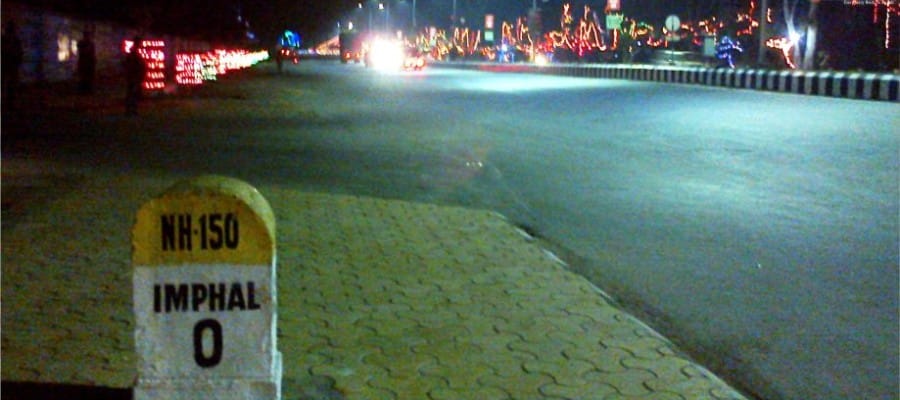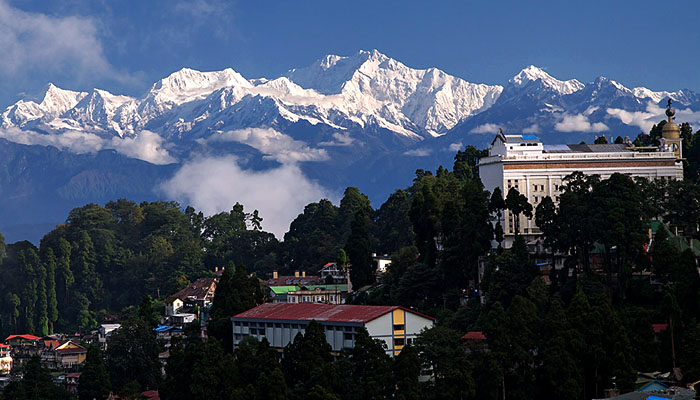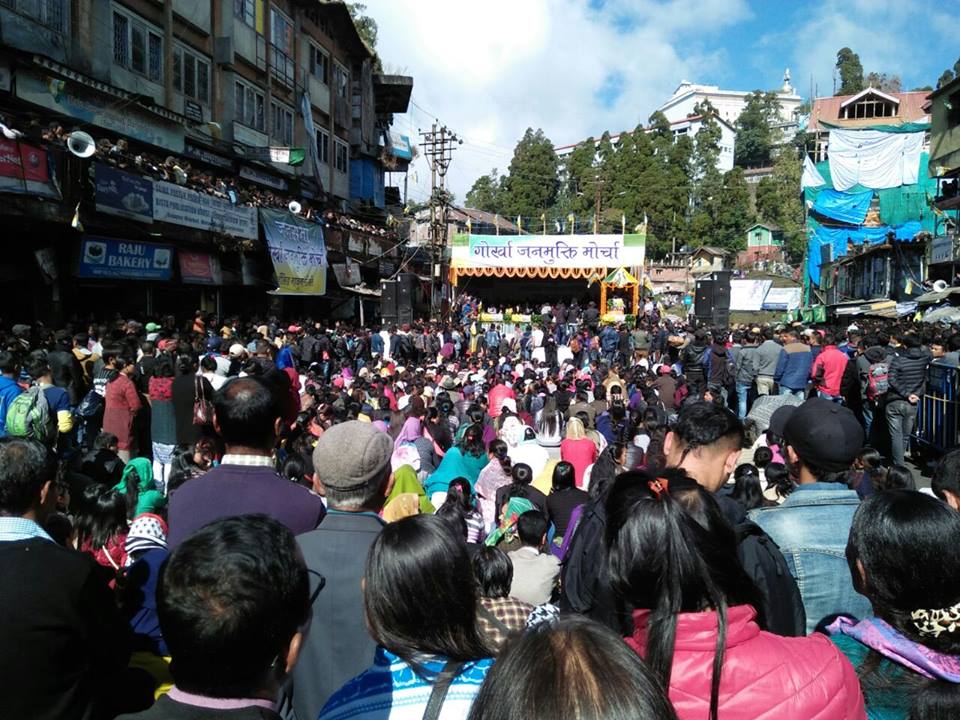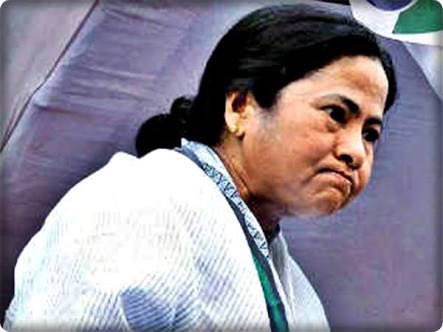Before you even start reading the article, let me be clear that I am a 4th generation Gorkha settled in Manipur. And I will accept criticism if you at any point feel that the article is a little biased. I am a confused person right now. Suddenly, after having lived for 31 good years of my life, my belongingness and loyalty towards my motherland are being questioned.
I do not write this article with pride. In fact, it is shameful that despite having been born and brought up as a Manipuri Gorkha, today I am having to publish an appeal to clarify that I too belong to Manipur. From time immemorial, it is always the majority who create history. We have never read or heard about the story of the minority. Today, I will narrate the story of the minority, the voiceless and the helpless.
Recently, there was a video circulating on social media it showed a lady who was being delivered a mob justice. She was being slapped, hit by a shaft, and ever had her hair chopped in public. Whatever be the reason, that was not the right way to vent dissatisfaction in the wake of such a political crisis. Tomorrow, some other crowd might just want to do the same thing on another individual. Who is going to take the blame then? As a civilized society with such a rich history and culture, a more matured approach would have given dignity to the agitation.
We are accused of encroaching the land. We are accused of being a threat to the social fabric of the state. We are asked to pack up and leave the state. How is it even possible? We are not here staying in a rented house that we pack our belongings and move to another house. My family has not grabbed any land or encroached upon anyone else’s territory. We have papers for our land as per the law of the land. We also grew up listening to our grandmother narrating us stories of the Japanese drones flying above the roof. We have heard stories of our grandfathers fighting to protect the land alongside the British and the maharaja’s army. Are our stories any different from the stories of a Meitei, Naga, or a Kuki kid?
They say that our contribution to the land is zero. Turn any pages of the history of this land and you will find a Gorkha, Major Subedar Niranjan Singh Chhetry amongst the earliest martyrs of the land. He was hanged to death alongside Bir Tikendrajit and General Gambhir Singh by the British on 13th of August 1847.
They must have also conveniently forgotten that we are the most peaceful community in the state. We live happily with all other communities, be it the Meiteis, Nagas or the Kukis. I have studied Meiteilon throughout my childhood, I can speak a bit of Kuki, and I have lived with a Naga friend for about 7 years of my life.
Like you all, we have recited Ougri Sheirent, listened to Khamba-thoibi with awe, enjoyed the colours of Yaoshang, celebrated Lai Haraiba with equal enthusiasm, and cannot live without Ironba, Nga-Thongba and Ooti as our daily staple. What makes me less Manipuri than anybody else from my state? Perhaps we are the only community in Manipur which never had any law and order problem with the state. We don’t have any armed struggle or resistance to any government policies. We have been one of the most hospitable communities both to the armed forces and the rebels. Yes, in the interiors we have stories of people who wake up in the middle of the night to cook and feed rebels who are passing by the village. The same villagers also prepare team when government forces pass by.
Despite all this, we are time and again asked to cite the history of our existence in the state. Below are some historical records of the settlement of Gorkhas in Manipur to put across the point that we are not just land grabbers and that we have taken equal part in the nation-building process in Manipur:
- On recorded history, the first batch of Gorkhas came to Manipur during the time of Raja Gambhir Singh. In 1824, the Gorkhas of the 16th Sylhet Local Battalion, later to become the 8th Gorkha Rifles, were included in the Police Levy of Gambhir Singh. During the first quarter of the 19th Century, Manipur was much troubled by Burmese intruders and troops. To secure Manipur, Gambhir Singh raised an army in 1825 and recruited Gorkhas from Sylhet for it. The militia was named the ‘Victoria Paltan’. (Source: The Role of Gorkhas in Making of Modern India)
- Before the beginning of the 20th century, the Gorkha/Nepali Gwalla (cowherd community) was confined in the Manipur valley. And since the Meitei community were not a great consumer of milk and ghee and land was becoming scarce in the valley, the Govt of Manipur decided to shift the Gorkhali/Nepali Gwalla to the northern part of the Manipur Valley creating a Gorkha/Nepali reserve (18 miles long) in between Sekmai and Kangpokpi in 1915 and later on partially extended up to Maram, Siddim Pukhri and lrang Part-I & II (Source: Manipur State Administrative Report 1915-16 Chapter – V, No. 2 Para V. Durbar Resolution 1 dated 17th February 1915).
- That, the creation of the Sekmai Kangpokpi Gorkha Grazing Reserve the Nepali graziers began to settle within the reserve areas of Kurapokpi, Sapermeina, Shriwani, Keithelmanbi, Paspati, Kalapahar, Santolabari, Chandraman, Kangpokpi, Irang, Maram Siddim Pukhri. In 1918, a survey of the Gorkha/Nepali Reserve area was done wef. 19th June 1918 to 7th January 1920 and Patta was issued for the Gorkha/Nepali graziers who applied for agricultural land.
- The 1st Assam Rifles was raised in Manipur in 1915 and had over 80% Gorkha personnel.
- First Manipur Rifles, raised in 1946 also inducted a huge number of Gorkhas. Still today, the family quarters of the battalion has several Gorkha families living there.
- Even eminent scholars like MK Binodini, the royal family of Manipur confirms that the Gorkhalis have long been a part of Manipur’s cultural milieu. She says “…in fact I do not know at what time so-called Nepali community came to Manipur. Since my childhood beginning from Mantripukhri to Kangpokpi, I have seen their settlement to be in existence long before many years. At the time of my father Maharaja Churachand, when he was in drive on the Dimapur road, I still remember the joyous welcome and applause accorded by the Nepalese children nearby the road and I saw many Nepali personnel in the post of high rank and files of the Manipur State Police” (Source: ‘A Yaipha Paojel’ in a journal called ‘Netee’; published by Manipur Nepali Sahitya Parishad in 2006)
- When World War II reached till Kanglatongbi-Kangpokpi, the Gorkha community was evicted by the Govt. Many of them left their land temporarily and got back when the war was over. However, the government had by then ceased the Nepali grazing reserve (26th August 1946), giving effect from 1st December 1946. Many who failed to comply with the government order or returned late to their land lost their land and had to seek shelter with their neighbouring tribal brothers for their livelihood.
The Gorkha community is settled for nearly 2 centuries and have lived in an area of 140 sq. miles till 1915. Besides the army settlers, we could rear more than 10,000 cattle and buffaloes. An entire stretch of road named in Jiribam was named as Man Bahadur Limbu’s Road. Today, after almost 2 centuries, our population is not even 1 lakh. How could we possibly disturb the social fabric of the Manipuri society or even snatch away opportunities from the locals?

Today, we are as much a victim of historical circumstances, miscalculation and manipulation as all of you. We too would want to be part of the decision-making process which will segregate the outsiders from the insiders. Sadly, despite being a part of the greater Manipuri society for nearly 200 years, we have been pre-levelled as “outsiders”. Look into your hearts and think for once, how would you react, if you and your community were labelled as such?
Most of the Gorkha youths from Manipur today are working in the defence or the metro cities. This also brings in revenue to the state. How can we possibly exploiting the wealth of Manipur? I would love to know if you have seen anything unjust being committed by any Gorkha in Manipur.
Today, we live outside the state in metro cities. Ask one of your own ‘inside Manipuris’ about how does it feel to be humiliated. If you have no idea of how humiliated your brothers and sisters feel when faced with racism outside the home state, maybe you should go and speak to them. While we outrage over “racism “against our Manipuri people in Delhi and other cities, we have turned a blind eye and deaf ear to numerous instances of racism here in Manipur itself, isn’t that hypocritical?
In this city, we only have people; there is no Meitei, Naga, Kuki, Gorkha, Bengali, Bihari or Marwari. If someone asks me, I proudly call myself Manipuri Gorkha. Here no one accuses anyone of stealing opportunities or ancestral land. No Bihari cries of innocent people being killed, no Meitei accuses a Bihari of depleting his economy. We share rooms to save money, lend and borrow money when we are broke, we share pizzas and drinks together, we contribute for the electricity bills, we wait for each other to walk back home after office, We cook together, we laugh at each other’s jokes, we fall in love, we get married. We live happily here, but we never talk of our problems back home. Why?? Because it divides us.
We are happy out here, but why this indifference back in our own homeland?? I leave this for you to ponder upon.



![[Pic by Nand Poudel GJM (BT) faction commemorating Balidan Diwas at Sibchu]](https://thedarjeelingchronicle.com/wp-content/uploads/2019/02/Pic-by-Nand-Poudel-GJMBT-faction-commemorating-Balidan-Diwas-at-Sibchu-180x101.jpg)


Be the first to comment on "Ask Me How I Feel About Inner Line Permit"